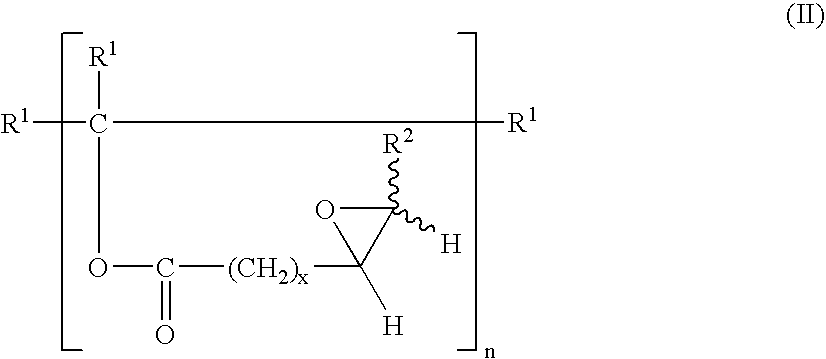Integrate chemical processes for industrial utilization of seed oils
a technology of chemical processes and seed oils, applied in chemical/physical processes, climate sustainability, fatty-oil/fat refining, etc., can solve the problems of inability to commercialize these metathesis processes, the productivity of prior art metathesis processes is unacceptable, and the number of turnover is too low to achieve the effect of facilitating commercial implementation of these metathesis processes, improving productivity, and improving the operability of the metathesis catalys
- Summary
- Abstract
- Description
- Claims
- Application Information
AI Technical Summary
Benefits of technology
Problems solved by technology
Method used
Image
Examples
example 2
[0087] Example 1 was repeated, with the exception that the methyl oleate (Witco) was treated over alumina and found to contain only 0.3 meq peroxides / kg. Metathesis results are shown in Table 1, where it is seen that a turnover number of 2,565 and a conversion of 57 mole percent methyl oleate were achieved in 249 reaction minutes. When Example 2 was compared with Example 1, it was found that the reduction of peroxide concentration from Example 1 to Example 2 led to significant increases in turnover number and conversion at reduced reaction time.
example 3
[0088] Example 1 was repeated, with the exception that a methyl oleate (Witco) was obtained containing only 3.1 meq peroxides / kg, and this methyl oleate was used directly in the metathesis process without treatment over alumina. Metathesis results are shown in Table 1, where it is seen that a turnover number of 990 and a conversion of 22 mole percent methyl oleate were achieved in 249 reaction minutes. When Example 3 was compared with Examples 1 and 2, it was found that as the concentration of peroxide decreased, the turnover number and conversion of methyl oleate increased at comparable or lower reaction times.
example 4
[0090] Example 4 illustrates on a large scale the purification of a fatty acid ester composition and its subsequent metathesis with ethylene to a reduced chain α-olefin and a reduced chain α,Ω-unsaturated ester.
[0091] A reactor vessel was assembled comprising a 316 stainless steel Pfaulder reactor (50 gallon) fitted with two beaver tail baffles and agitated by an overhead drive with twin 12″ diameter, four inclined bladed, stainless steel impellers, ˜20″ apart, operating at 337 rpm. A methyl oleate feed (Witco brand methyl oleate) was purified by passing it through a stainless steel column [14 inch diameter (35.6 cm)×8 foot length (2.5 m)] containing alumina (UOP A2 brand alumina, 12×32 mesh). The peroxide concentration of the purified feed was 0.2 meq / kg. The purified feed was fed to the reactor vessel. Using agitation (60-100 rpm), the full reactor (300 lbs, 136.1 kg, 1.1 lb-moles methyl oleate) was sparged with nitrogen gas at atmospheric pressure overnight via a 14 inch sparge ...
PUM
| Property | Measurement | Unit |
|---|---|---|
| weight percent | aaaaa | aaaaa |
| weight percent | aaaaa | aaaaa |
| weight percent | aaaaa | aaaaa |
Abstract
Description
Claims
Application Information
 Login to View More
Login to View More - R&D
- Intellectual Property
- Life Sciences
- Materials
- Tech Scout
- Unparalleled Data Quality
- Higher Quality Content
- 60% Fewer Hallucinations
Browse by: Latest US Patents, China's latest patents, Technical Efficacy Thesaurus, Application Domain, Technology Topic, Popular Technical Reports.
© 2025 PatSnap. All rights reserved.Legal|Privacy policy|Modern Slavery Act Transparency Statement|Sitemap|About US| Contact US: help@patsnap.com



